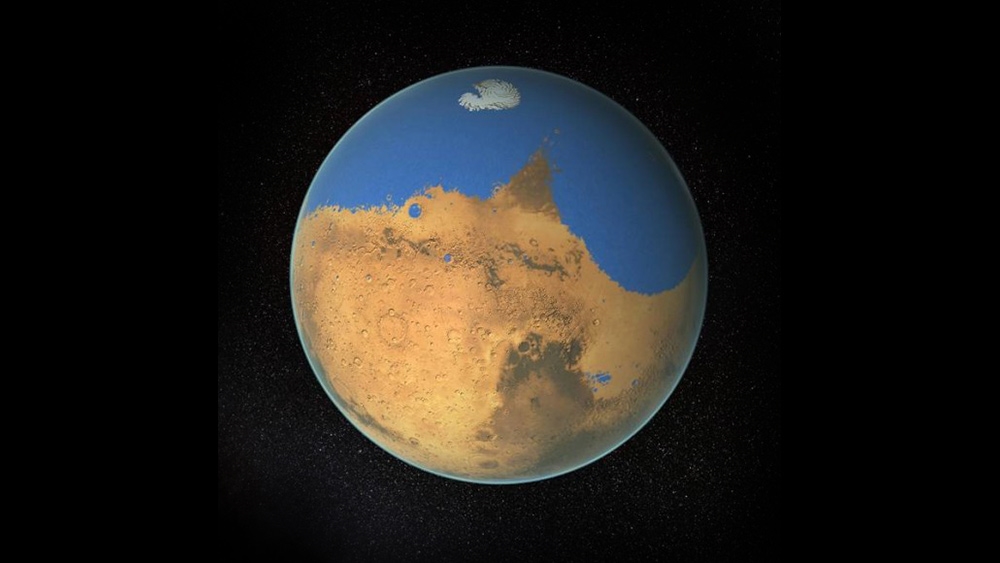
Space probes and Martian landers have found plenty of evidence for the presence of streams, rivers, ponds, and lakes on ancient Mars. The data has even suggested the existence of seas and oceans in the past.
On Earth, bodies of liquid water support life. Researchers speculate that water on Mars might have likewise hosted living organisms in the past – and may still be home to some form of life.
To further complicate the situation, no one knows exactly how all that water ended up on Mars in the first place. The sun gave off less heat and light during those early years. Climate studies also suggest that Mars did not have enough atmospheric gases to capture and retain enough heat to produce large amounts of rainfall.
Instead, researchers at the Sorbonne University theorize that Mars got the necessary heat from asteroid impacts. An asteroid produced massive amounts of super-heated rock and steam. (Related: Satellite images of Mars show valleys and trenches where ancient rivers once flowed.)
Massive asteroid impacts may have provided enough heat for rain and flowing water on Mars
The Sorbonne research team ran computer simulations of Mars' climate and geology. They added asteroid impacts and evaluated the environmental effects.
"Using sophisticated three-dimensional global climate-model simulations similar to the ones used, for example, to simulate global warming on Earth, we were able to simulate for the first time in three dimensions the climate change induced by the very large impacts that hit Mars about 4 billion years ago," explained Sorbonne researcher Martin Turbet.
Turbet and his colleagues concentrated on the most significant asteroid impacts. These events created craters that measured 370 miles (600 km) in diameter – the same size as major basins on Mars.
Their calculations showed that one of these impact events made the atmosphere too hot for liquid water for half a Martian year (0.94 Earth years). But as the temperatures dropped and the vaporized water cooled down, the waterlogged skies unleashed continuous rainfall for 12 Mars years. During this time, the average depth of the water covering the surface of Mars measured 8.5 feet (2.6 m).
Once the rains stopped pouring, Mars continued cooling off. The liquid water on its surface froze solid within a million years.
During the next 10,000 to one million years, solar radiation slowly heated surface ice. The resulting water vapor moved to other colder regions of Mars.
Did the asteroid impact also leave a long-lived hot spot on Mars?
Furthermore, the Sorbonne researchers theorize that a sufficiently massive asteroid might produce a local hot spot on Mars. The heated area might last for many millions of years.
For the most part, the hot spot would not produce enough heat to melt ice on the surface of the planet. However, it might preserve underground water in its liquid form.
To create the hot spot, an asteroid needed to be at least 180 miles (300 km) wide. It would also leave a 930-mile (1,500 km) wide impact crater.
The Sorbonne study did not account for the vast valley networks located south of the Martian equator. But other studies indicated that the valleys might have formed at different times than the impact basins and their asteroid creators.
However, the storms triggered by the asteroid impact might have reached their apex at the equatorial line. Turbet also thought it possible for the rain and floods to erode the craters seen on Mars. Finally, the deluges may have formed the planet's clay layers.
Sources include:
Please contact us for more information.






















